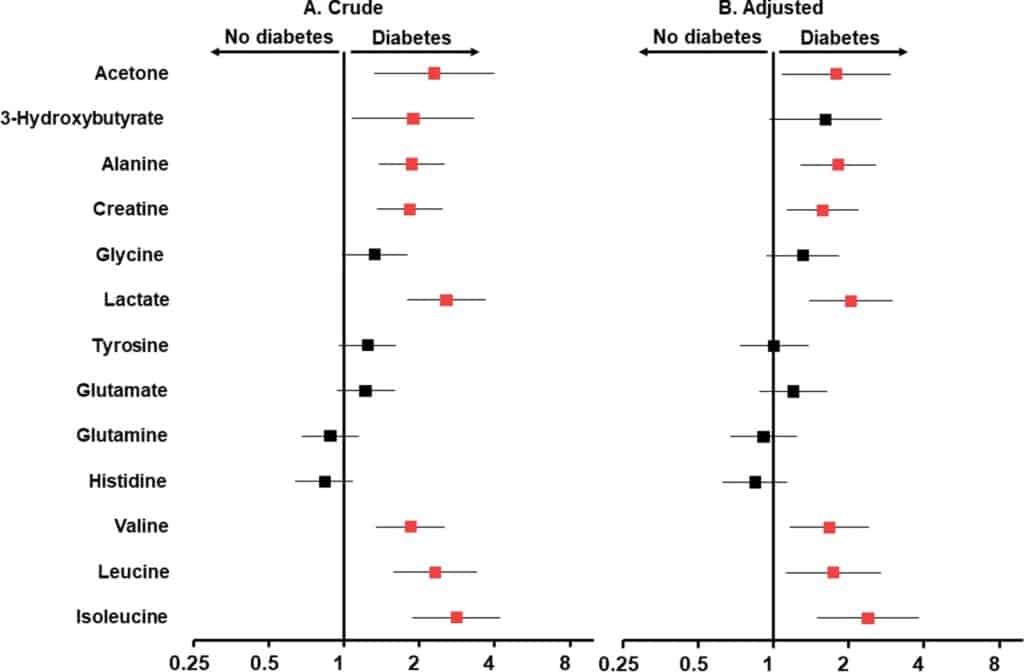What is metabolomics and how is it applied in diabetes?
Metabolomic profiling involves identifying intermediary molecules and end-products of metabolism, encompassing lipids, lipoproteins, fatty acid variants, amino acids, and glycoprotein acetyls. This approach holds promise for discovering novel biomarkers indicative of disease risk and offers fresh perspectives on molecular mechanisms, biological processes, and implicated disease pathways.
Diabetes, affecting over 500 million people in 2021, stands as a significant contributor to global mortality, with a staggering 6 million recorded deaths. Alarming projections indicate a continuous rise in these figures in the coming decades, underscoring an urgent imperative for effective disease prevention. Notably, Type-2 diabetes (T2D) constitutes 90% of total diabetes cases and is on a concerning upward trajectory due to the surge in sedentary lifestyles and increased adiposity.
Numerous risk factors, both nonmodifiable (age and genetics) and modifiable (environment, including lifestyle), have been linked to T2D. Each of the following risk factors— diet, body mass index (BMI), physical activity, alcohol consumption, and smoking—has been linked to the risk of diabetes.
Within the realm of metabolomic profiling, serum proton nuclear magnetic resonance (1H-NMR) spectroscopy enables the simultaneous assessment of numerous circulating metabolites swiftly and reliably. Over time, both our research and others’ studies have demonstrated the validity and robustness of this method in evaluating inflammation across various diseases with metabolic underpinnings.


By adopting this approach, metabolomics, analyzed from a simple blood draw, could revolutionize clinical practices, enhancing the detection of highly prevalent diseases.
An example of this is one of the last studies published by our collaborators in which the aim of the study was to analyze the plasma levels of low-molecular-weight metabolites (LMWMs) in a cohort of 307 patients with metabolic diseases including type-2 diabetes (T2D), obesity and hypertension, to assess their relationships with T2D and incident atherosclerotic cardiovascular disease (ASCVD).
Among the LMWMs measured, the branched-chain amino acids (BCAAs) valine, leucine and isoleucine showed a positive association with several clinical and lipid-related biochemical parameters and inflammatory markers (p<0.05). Likewise, these three BCAAS were associated with diabetes even after controlling for clinical cofounders. During the follow-up period of 10 years, 29 of the 185 patients with diabetes at baseline (15.68%) developed ASCVD. After adjusting for clinical covariates, baseline levels of valine and alanine were associated with the development of ASCVD (p<0.05).
This study underscores the potency of NMR metabolomics as a powerful tool for early cardiovascular risk detection in patients with T2D. The metabolomic profile surpasses conventional biomarkers, offering a deeper comprehension of T2D etiopathology.
If you want to read the complete research article: Moreno-Vedia, Juan, et al. “Serum branch-chained amino acids are increased in type 2 diabetes and associated with atherosclerotic cardiovascular disease.” Cardiovascular Diabetology 22.1 (2023): 249.


